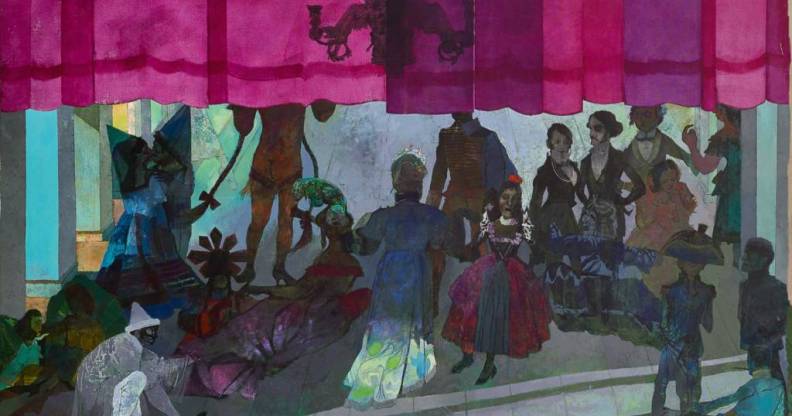Beautiful paintings showing extravagant drag ball and first gay kiss in British theatre are now under public ownership

The Drag Ball, No. 1, 1967-8, by Leonard Rosoman (Pallant House Gallery)
A series of Leonard Rosoman paintings depicting an extravagant drag ball and the first gay kiss in British theatre have been acquired for the nation in lieu of inheritance tax.
The paintings were completed by the celebrated artist Rosoman between 1967 and 1968. They are now owned by the Pallant House Gallery in Chichester, settling £96,600 of tax.
The two largest paintings depict the famous drag ball scene in John Osborne’s controversial 1965 play A Patriot for Me, which helped pave the way for the abolition of theatre censorship.
“They are really wonderful works,” the gallery’s director, Simon Martin, told the Guardian. “On many levels they are exciting things for a museum to acquire. He has captured an extraordinary moment not just in theatre history but in British society.”
One of the paintings, The Drag Ball No 1, shows the curtain rising on an aristocratic Viennese ball, where the audience gradually grasps that almost all the actors are men, and two of them are kissing.
Rosoman’s work encapsulates the drama of the moment, which would have been groundbreaking at the time. “Rosoman is really thinking about the experience of being in a theatre and the shock of what people would have witnessed,” Martin said.
“This was the key moment in the play and was so controversial.”
The epic play is based on the true story of Alfred Redl, a blackmailed gay spy in the Austro-Hungarian army.
It was censored at the time as its homosexual content was deemed “too sexually transgressive”, but a legal loophole allowed producers to show it by temporarily turning London’s Royal Court theatre into a private member’s club.
Within a few years of the play’s contentious debut Britain passed the Theatres Act 1968, which abolished such censorship, and the Sexual Offences Act 1967, which legalised homosexual acts.
“Not only are [the Leonard Rosoman paintings] among his finest works, but they have a particular significance to LGBT+ history, to the history of British theatre and visual art, representing a time when Britain’s social and cultural history was on the cusp of a pivotal shift,” Martin told the Antiques Trade Gazette.



